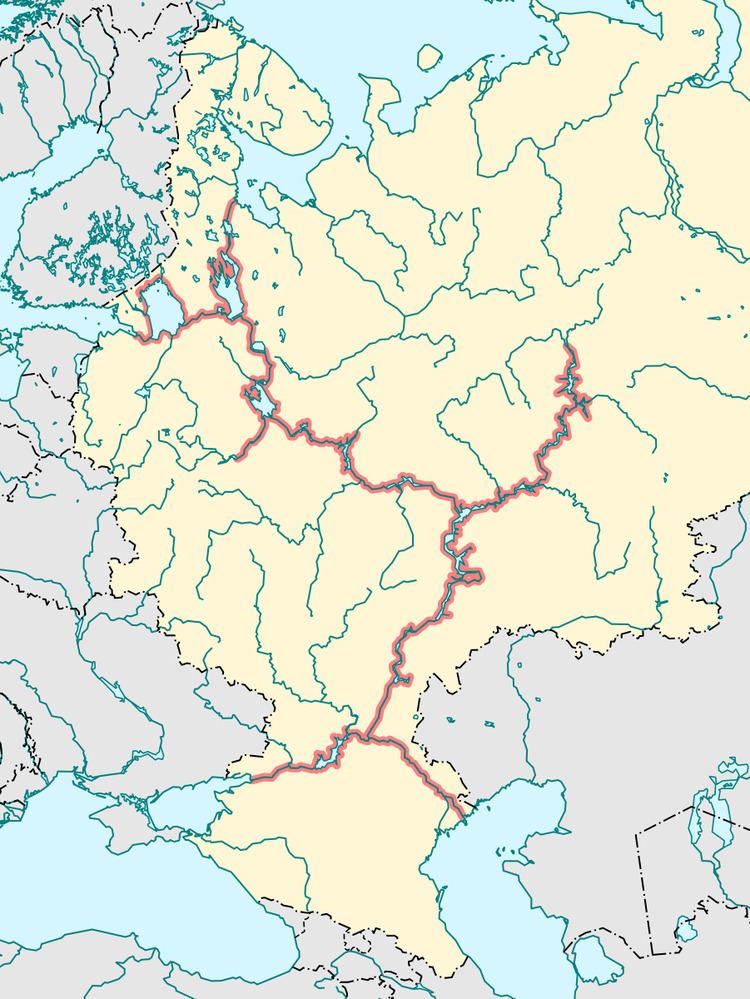 | ||
The Unified Deep Water System of European Russia (Russian: Единая глубоководная система Европейской части Российской Федерации) is a system of inland waterways in Russia linking the White Sea, the Baltic Sea, the Volga River, Moscow, the Caspian Sea and (via the Sea of Azov) the Black Sea.
The rated depth throughout the system is never less than 4.5 metres (15 ft), allowing passage of not only river craft but many sea-going vessels including warships and even nuclear submarines.
The English acronym is UDWS (the "European Russia" part being elided); the Russian acronym is ЕГТС which transliterates to EGTS.
The system includes these waterways:
Environmental impact
In 1999, the warty comb jelly colonized the Caspian Sea via the Unified Deep Water System. The establishment of this population led to a 60% reduction in the number of sprat, which in turn led to a reduction in the population of sturgeon and seals.
In total, according to the unified federal/state agency CaspNIRKh (Russian: КаспНИРХ), about 60 alien species of plants and animals penetrated into the Caspian Sea in the 20th century, which has led to significant changes to ecosystems.
